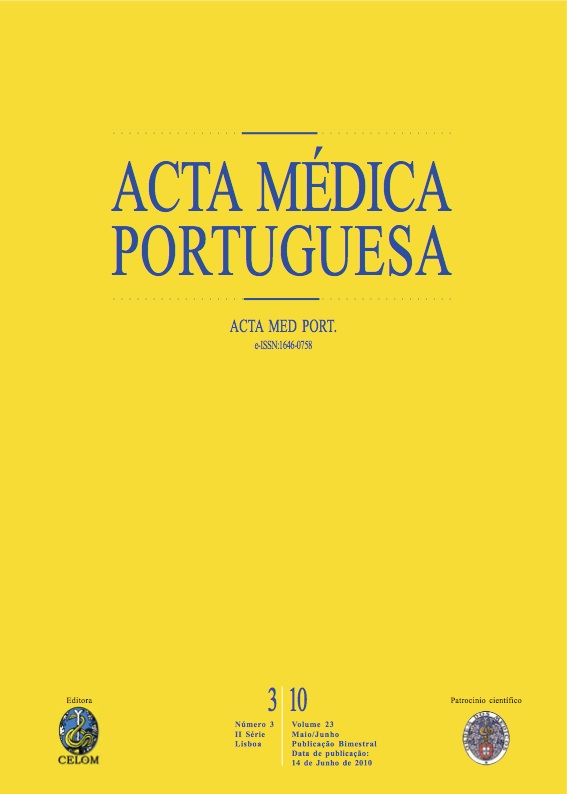Child abuse - a district hospital's reality!.
DOI:
https://doi.org/10.20344/amp.638Abstract
In Portugal child abuse is a reality, although its true incidence is still unknown.Retrospective study by consulting child abuse processes of children hospitalized in Paediatric Nursery and Neonatal Special Care Unit of Centro Hospitalar de Setúbal, E.P.E between January 1, 2006 and June 30, 2008. The following variables were studied: sex, age, year of hospitalization, length of stay, type of abuse, aggressor, drug abuse in family; mother's age, entities involved in the process and the applied measures to promote and/or protect.Sample of 65 children, with discrete predominance of male (35/65) and mostly < 1 month (n = 39). The largest number of hospitalizations was in 2007 (n = 34) and in 77% of the cases the length of stay was less than one month. It was practiced more than one type of abuse in 30,8% of the cases, negligence being the most practiced, in 80% of cases, followed by physical abuse, in 20%. The aggressor belongs almost always to nuclear family (59/65), being the mother in 41,5% of cases. There was at least 27,7% cases of children with parental drug abuse and 13, 8% with adolescent mothers. The support near the parents was the measure of promotion and protection applied in 43% of children and two children were adopted. In 80% of the cases, there was intervention of the Comissão de Protecção de Crianças e Jovens and six cases were solved just by the social services of the hospital.The precocious detection of risk factors such as pregnancy in the adolescence and drug abuse, among others, as well as the follow-up and signalling of dangerous situations are professional obligations of health institutions and must be stimulated. In spite of efforts in updating the social support and the legal framing of these situations, the prevalence of child abuse remains high.Downloads
Downloads
How to Cite
Issue
Section
License
All the articles published in the AMP are open access and comply with the requirements of funding agencies or academic institutions. The AMP is governed by the terms of the Creative Commons ‘Attribution – Non-Commercial Use - (CC-BY-NC)’ license, regarding the use by third parties.
It is the author’s responsibility to obtain approval for the reproduction of figures, tables, etc. from other publications.
Upon acceptance of an article for publication, the authors will be asked to complete the ICMJE “Copyright Liability and Copyright Sharing Statement “(http://www.actamedicaportuguesa.com/info/AMP-NormasPublicacao.pdf) and the “Declaration of Potential Conflicts of Interest” (http:// www.icmje.org/conflicts-of-interest). An e-mail will be sent to the corresponding author to acknowledge receipt of the manuscript.
After publication, the authors are authorised to make their articles available in repositories of their institutions of origin, as long as they always mention where they were published and according to the Creative Commons license.









